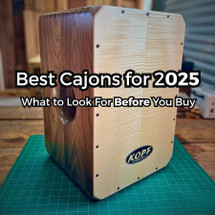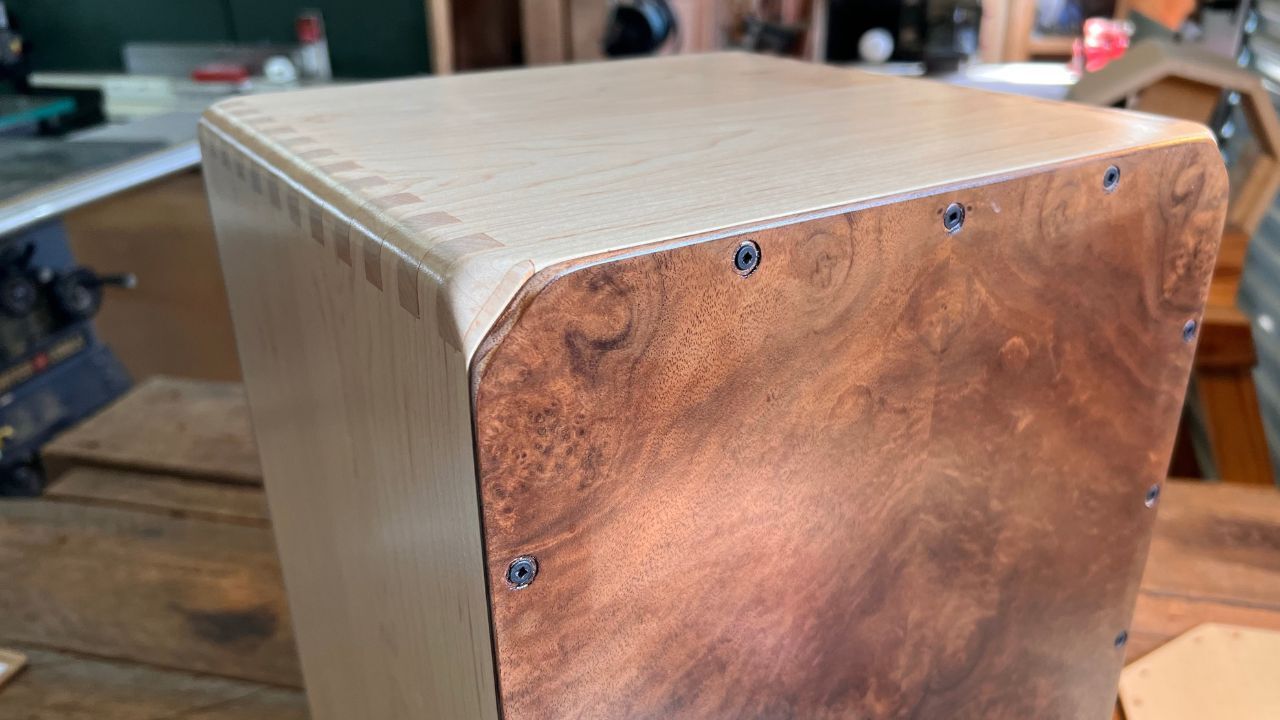Posted by Stephen Head on 11th Oct 2025
Best Cajons for 2025: How to Choose an Instrument That Grows With You
Introduction
Every year, players go searching for “the best cajon.”
It’s a fair question — but one that can’t be answered by a ranking chart or a price tag. The truth is, the best cajon isn’t about hype or hardware. It’s about sound, feel, and the way it responds to you over time.
At Kopf Percussion Studio, I’ve spent years studying how tonewoods, joinery, and port geometry influence tone and projection. What follows isn’t a top-10 list — it’s a clear look at what actually matters when choosing a cajon that will keep you inspired for years to come.
1. The Sound Starts With the Wood
Every cajon begins with wood, and wood determines how it will speak.
Dense hardwoods like walnut produce deep, rich bass tones with a smooth decay. Maple brings clarity and brightness, helping your slap tones cut through in acoustic mixes. Poplar sits right in the middle — balanced, open, and responsive.
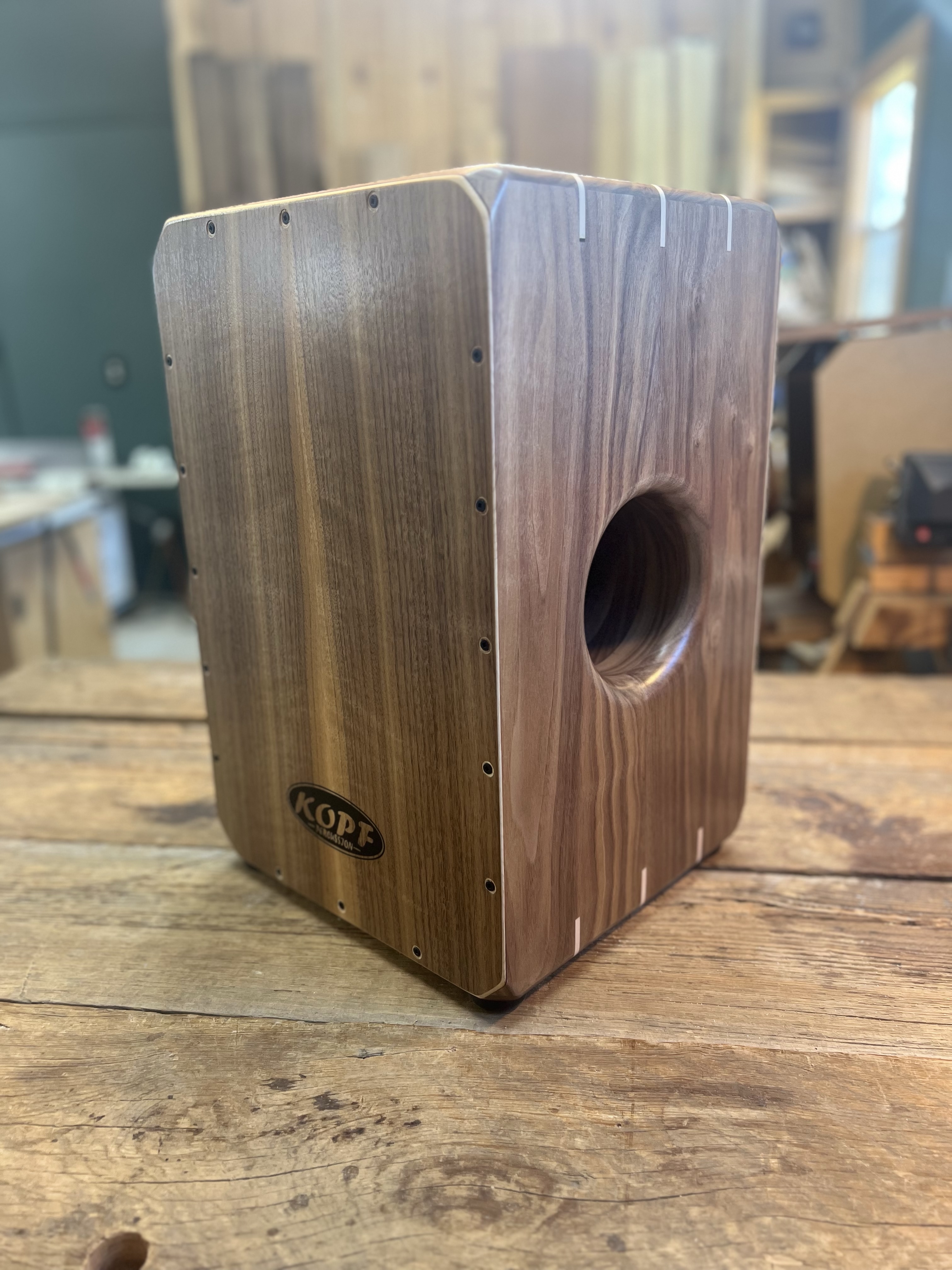
But it’s not just what woods are used — it’s how they’re used.
Many factory-built cajons rely on plywood bodies with cheap filler cores that restrict vibration and dampen tone. At Kopf Percussion, every body is crafted from solid tonewoods, joined and voiced for strength and resonance. The tapas (front plates) are also built with solid tonewood cores, not thin veneers glued over soft or hollow layers.
That solid construction gives the drum a truer voice — more dynamic range, better bass response, and longer sustain. You can feel it the first time you play it.
In my American Tonewood Series, I often combine these materials: walnut or poplar bodies paired with maple tapas for definition. The result is a drum that projects evenly across the frequency range — strong bass, crisp highs, and natural warmth throughout.
If you’re trying to decide between brands or models, start by paying attention to both the type of tonewoods and the integrity of their construction. What’s under the surface matters just as much as what’s on it.
2. The Snare System Defines Character
A cajon’s snare system gives it personality — and consistency matters more than adjustability.
Every Kopf cajon, ever since I released the S-Series Cajon ,uses a fixed snare system designed for clarity, articulation, and long-term stability. Adjustable systems can drift or rattle over time. A properly voiced fixed system doesn’t need constant tuning — it simply works.
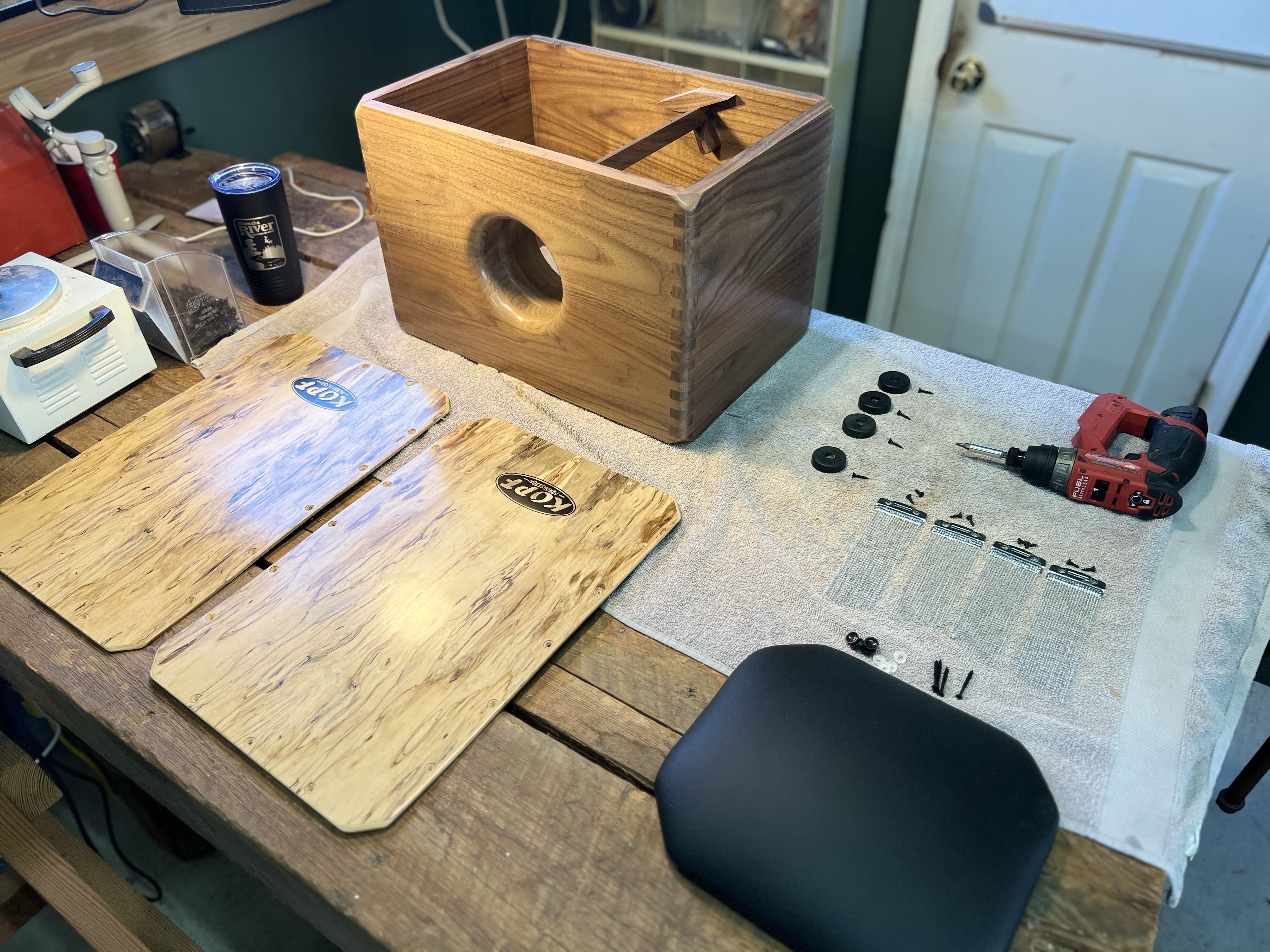
The snare should respond evenly across the faceplate, with no dead zones or unwanted buzz. If you’re auditioning a cajon, tap from corner to corner and listen for evenness. You’ll know right away if the snare is working with the drum or against it.
3. Bass Matters More Than Loudness
A lot of factory-made cajons are built to sound loud on showroom floors. That doesn’t mean they sound good in a mix. Real tone lives in depth and balance, not just volume.
The bass in a cajon isn’t about one single feature — it’s the result of the entire design working together. It’s shaped by the tonal qualities of both the body and the faceplate wood choices, the surface area and thickness of the tapa, the internal volume of the box, and the design, size, and depth of the sound hole. Every one of these factors changes how air moves and how frequencies interact inside the drum.
At Kopf Percussion, each of those elements is tuned intentionally. The body dimensions and wall thickness control air pressure and sustain. The faceplate thickness defines how quickly the low end responds. And when a port is carved — not added as plastic hardware — it acts like a natural resonator that enhances the low frequencies without creating boom or distortion.
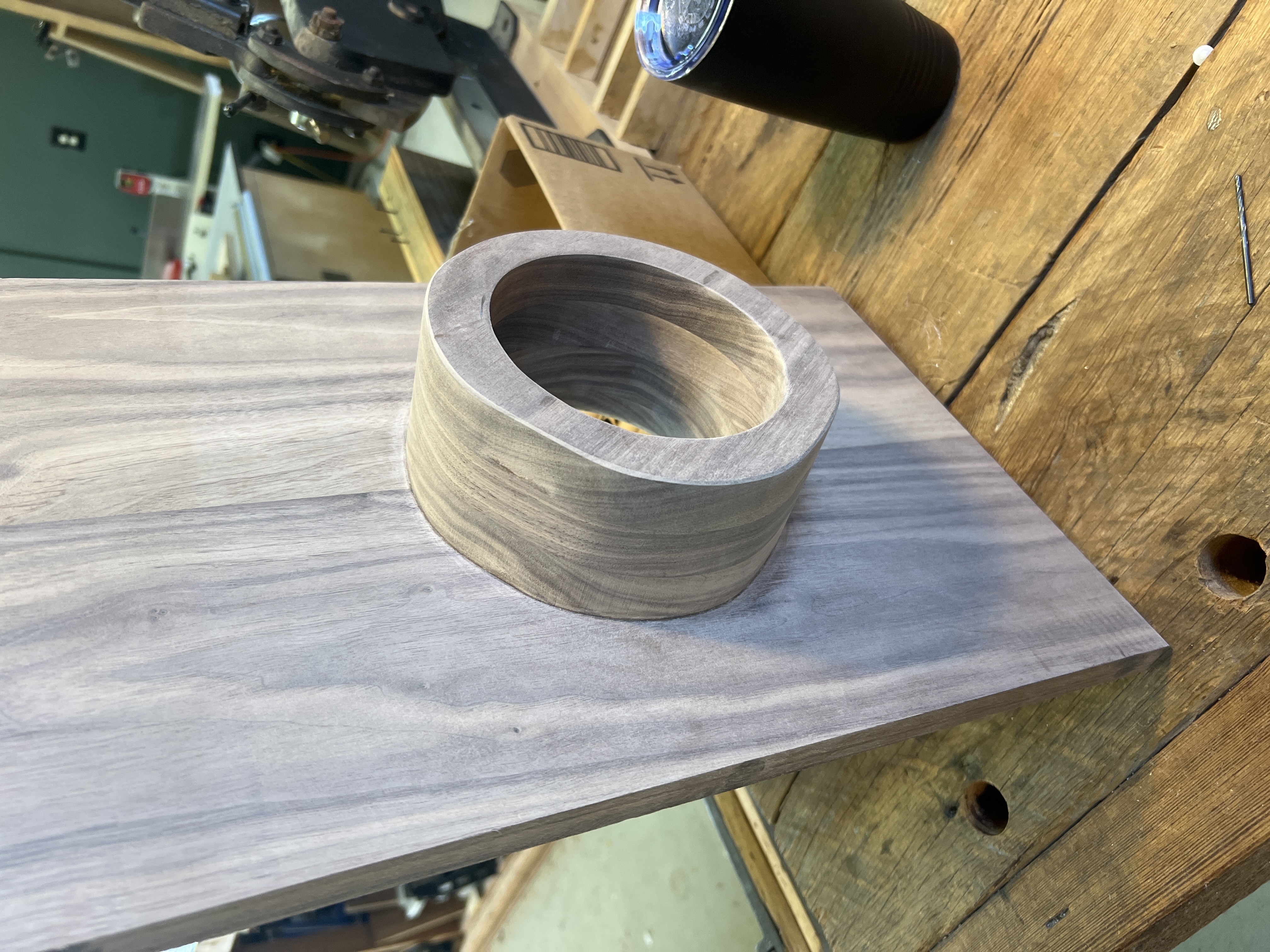
When you’re evaluating a cajon, look beyond the marketing claims. A carved wooden port, balanced internal volume, and well-voiced tonewoods always produce a deeper, more musical bass than a box built for loudness alone.
Check out my Limited Series Cajons to see examples of this.
4. Comfort and Playability
The best cajon isn’t just heard — it’s felt.
Every design choice should serve the player. The beveled edges on my drums are a good example. I do it because I believe that if something can be made better, I’m obligated to do so. It’s a small detail that makes a big difference in comfort during long sessions.
The same thinking applies to the foundation. Each cajon sits on steel-reinforced rubber feet, positioned so players can lean the drum back slightly while playing if they choose. It adds stability, improves projection, and prevents unwanted resonance from the floor.
Those kinds of choices don’t show up on a spec sheet, but they add up to an instrument that feels right — one that invites you to play longer and explore more nuance in your touch.
5. Growth Comes From Quality
A great cajon doesn’t just keep up with you — it keeps you coming back.
When a drum is built right, it responds the way a real instrument should. It has tone. It has bass. It’s solid and dependable. That kind of instrument makes you want to play more, explore new rhythms, and push your touch and dynamics further.
It’s no different than a fine guitar or piano — the better the build, the more it gives back. Players don’t outgrow quality; they grow because of it.
So instead of chasing add-ons and gadgets, invest in craftsmanship. A well-made cajon will hold its voice for years and make every session feel like a conversation worth having.
Learn more about the way I build cajons in my blog post Tradition Isn’t the Goal — It’s the Byproduct of What Works
6. Final Thoughts
The best cajon for 2025 isn’t a trend — it’s the one that still inspires you in 2026, 2028, and beyond.
Look for craftsmanship, honest tonewoods, and an instrument built by someone who listens.
If you ever want guidance, I’m always happy to talk about sound, wood, and design. Every cajon that leaves this studio carries a bit of that conversation — because the right instrument isn’t chosen once. It’s chosen again every time you play. You can contact me via my contact form at KopfPercussion.com

